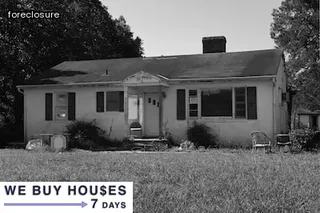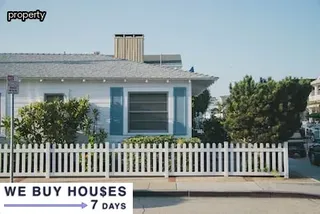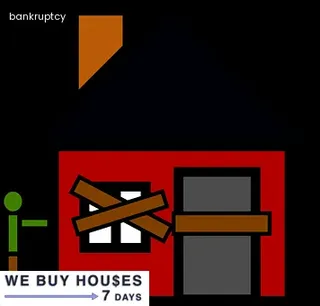Navigating the foreclosure timeline in Alaska can be a complicated process. It is important for homeowners to understand their rights and the timeline of events so they can make informed decisions about their future.
Foreclosure law in Alaska is set out by statute, which means that the law applies to all lenders, borrowers and other parties involved in the foreclosure process. The first step of foreclosure in Alaska begins when a lender files a complaint with the court, commonly referred to as a lis pendens.
This document informs all parties that the lender intends to foreclose on the property if payment is not made within a certain period of time. Once this document is filed, it provides legal notice that the property owner must respond within twenty days or face further proceedings.
If an appropriate response is not received, then the lender can proceed with filing a motion for summary judgment, which asks the court to order the sale of the property without going through a full trial process. Once this motion has been granted, it sets in motion additional steps such as public notices and auctioning off of the home.
Homeowners should be aware that there may be other options available besides foreclosure such as loan modification or repayment plans depending on their particular situation. Understanding these laws and timelines can help homeowners make informed decisions about their future during this difficult time.

When it comes to missing a payment on a property in Alaska, the consequences can be severe. Failing to make timely payments can result in the foreclosure of an individual's home or other property, leading to serious financial damage.
The state of Alaska requires that lenders provide notification of foreclosure proceedings when payments are not made within 30 days. If a borrower is unable to come up with the funds due, they have sixty days from the date of notice to pay what is owed before foreclosure proceedings begin.
During this time period, borrowers should act quickly and contact their lender directly to discuss available options for avoiding foreclosure. It may be possible to negotiate a payment plan or refinance the loan; however, if those measures fail, then foreclosure is unavoidable and may result in legal action against the borrower.
Taking swift action can help minimize the damage associated with missing a payment and offers individuals additional chances at keeping their homes.
A breach letter is an important document in the foreclosure process in Alaska. It is a formal notification from the lender to the borrower that they have failed to make payments or comply with other conditions outlined in the mortgage agreement such as keeping up with home maintenance and taxes.
The breach letter informs the borrower that they must rectify their delinquency within a specific period of time by paying all delinquent amounts, including interest and fees, or else the lender will proceed with foreclosure proceedings. In most cases, lenders will give borrowers at least 30 days to remedy their failure to pay before they take further action.
Receiving a breach letter is an important step in any foreclosure timeline and understanding its contents can help homeowners better prepare for whatever comes next.

Foreclosure in Alaska is triggered by a homeowner's failure to make mortgage payments. This can be due to an inability to pay, or a refusal to pay for any reason.
The foreclosure process begins when the borrower fails to make payment for a prolonged period of time, usually 90 days or more. During this time, the lender will serve the borrower with a notice of default and demand full payment, including any fees or penalties that may have accrued.
If the borrower still does not make payment, the lender may then file suit against them in court and initiate the foreclosure process. At this point, it is important to understand all applicable laws as they pertain to foreclosure proceedings in Alaska.
Understanding the timeline and triggers for foreclosure can help homeowners avoid serious financial hardship and protect their rights during this difficult process.
Alaska is one of many states that has specific laws in place to protect homeowners facing foreclosure. Generally, the state's foreclosure process follows a certain timeline but can vary depending on the subject property's lien type.
In Alaska, most foreclosures are non-judicial because they do not involve court proceedings. This allows lenders to repossess properties without having to go through the court system.
However, this type of foreclosure must comply with all applicable state statutes and regulations. Additionally, the lender must provide adequate notice to the homeowner before initiating any action.
Under Alaska law, a notice of default must be issued at least 30 days before any foreclosure activity can begin. The borrower then has 90 days from receipt of the notice to cure the default before a final foreclosure sale can take place.
All publicly advertised foreclosures must also include a statement advising homeowners of their legal rights and options when facing foreclosure. Ultimately, understanding Alaska's specific laws regarding foreclosure is essential for navigating through the process successfully and protecting one's rights as a homeowner.

Understanding the eligibility for reinstatement before foreclosure sale in Alaska is an important part of the timeline of navigating a home foreclosure. In order to take advantage of the right to reinstate, homeowners must meet certain criteria.
Generally, this includes being able to pay off the full amount of overdue payments and costs associated with the foreclosure at any point up until the sale date. To be eligible, borrowers also need to demonstrate that they have not been in default on their loans for more than one year or have already taken out a loan modification or other alternative to foreclosure option.
If a homeowner meets these conditions, they can exercise their right to reinstate and save their home from becoming part of a foreclosure sale. It is important that homeowners who are facing potential foreclosure understand the timeline for taking advantage of this option so that they can make informed decisions about what is best for them and their family going forward.
Alaska residents facing foreclosure should be aware of the redemption period that takes place after a foreclosure sale. For most cases, the redemption period lasts 90 days and begins when the court issues a “certificate of sale” following a foreclosure sale.
During this time, the homeowner may be able to reclaim their home by paying the full balance of all delinquent mortgages plus costs and interest. It's important to note that if the homeowner does not make payments during the redemption period, they will lose any right or claim to their property and it will become owned by new legal title holders.
The laws for redeeming a foreclosed home in Alaska also allow homeowners to sue for damages caused by wrongful foreclosure. Homeowners should consult with an experienced lawyer if they feel their rights were violated in any way during the foreclosure process.

In Alaska, eviction after nonjudicial foreclosure must be done in accordance with the state’s laws. The process of eviction is often complicated and lengthy, depending on the specific situation and timeline.
Therefore, it is important to understand the different steps that must be taken during this type of foreclosure. Generally speaking, after a nonjudicial foreclosure occurs in Alaska, the creditor will give notice to the borrower to vacate the property within a certain period of time.
If the borrower does not comply with this notice, then a formal eviction proceeding may follow. During an eviction proceeding in Alaska, there are strict rules that must be followed by both parties.
The court will determine whether or not an eviction can occur according to the laws and regulations set forth by the state as well as any other applicable federal rules or regulations. If an eviction is granted by the court, then the creditor has legal authority to remove any occupants from the property.
It is also important for borrowers to understand that they may still owe money even after an eviction occurs; therefore, they should contact their lender to discuss any remaining debt obligations before leaving their property.
Working with an experienced foreclosure lawyer in Alaska can be immensely beneficial for those navigating the state's foreclosure timeline. A knowledgeable attorney can provide advice on the legal processes and provide guidance on understanding the laws that govern foreclosures in Alaska.
Furthermore, a lawyer specializing in foreclosure can help a homeowner understand their rights under Alaska law and work to ensure that any foreclosure proceedings are conducted lawfully. An experienced attorney is also well versed in the details of the foreclosure process and may be able to negotiate a favorable outcome for their client.
Having a knowledgeable attorney at one's side to represent them during a foreclosure proceeding can make all the difference when it comes to protecting one's rights and interests throughout this difficult process.

When navigating the foreclosure timeline in Alaska, it is important to understand when the process begins. Generally, a lender can initiate a foreclosure proceeding once a borrower is more than 30 days delinquent on their loan payments.
At this time, the lender must provide written notice of default and demand full payment of the loan balance. If payment is not received within a specified amount of time, typically 20 days, then the lender can issue a notice of sale which begins the legal foreclosure process in Alaska.
The notice of sale must be posted at least 20 days prior to the scheduled public auction, during which time a homeowner has an opportunity to cure the default by paying all past due amounts plus associated costs. After that point, if no payment is received from either party, then the property will be sold at auction and title will transfer to the successful bidder.
To fully understand all aspects of Alaska's foreclosure laws and timeline it is advisable to consult with an experienced real estate attorney.
Navigating Alaska's foreclosure timeline can be daunting, but understanding the process and laws can help you make informed decisions. The first step in any foreclosure is for the lender to notify the borrower of their default of payment.
This notification will contain details about what is owed and what steps must be taken to cure the default. Once the borrower has been notified, they have a certain time frame to either pay back what is owed or contest the foreclosure.
If payment is not made within this time frame, then a Notice of Default and Right to Cure will be filed with the court. The next step in the process is for the lender to file a Complaint with the court which outlines all relevant information pertaining to the case, including why they are seeking foreclosure.
After this document has been recorded, a hearing will be scheduled where both parties can present evidence as to why or why not a foreclosure should take place. Once this hearing is complete, if it is determined that a foreclosure should occur then an Order of Foreclosure will be issued by the court which officially starts the foreclosure sale process.
During this sale process potential buyers will submit bids on properties and if accepted by both parties then a deed transfer takes place concluding the Alaskan foreclosure timeline.

In Alaska, nonjudicial foreclosure procedures are governed by the Revised Code of Alaska (RCA) Sections 34.20.
010 to 34.20.
180. The process begins with the lender filing a Notice of Default and Election to Sell with the court and providing notice to the borrower via certified mail or at their last known home address if it is different from what is on record.
Next, the lender must post a public notice at least 20 days prior to sale in a newspaper of general circulation in the county where the property is located. On the same day as this advertisement, they must also provide written notice to all persons recorded on title who have not consented to sale, including those with liens or other interests in the property.
This can be done via certified mail or through personal service by a person 18 years or older who is not related to either party involved in foreclosure action. Once these steps are complete, a foreclosure sale may take place no earlier than 90 days after filing notice of default and election to sell unless otherwise directed by the court.
Navigating a foreclosure process in Alaska can be overwhelming and it is important to understand the law. Fortunately, there are resources available to help individuals facing foreclosure in Alaska.
Homeowners can contact their local housing authority or Department of Community and Economic Development for assistance. Additionally, the Alaska Housing Finance Corporation (AHFC) provides several programs that can help those facing foreclosure.
Alternately, homeowners may seek legal advice from a lawyer familiar with Alaska's foreclosure laws. Nonprofit organizations such as Catholic Social Services may also be able to provide advice or support during this difficult time.
Finally, consulting with a HUD-approved housing counselor is another option as they are knowledgeable about state and federal mortgage assistance programs. These resources can provide guidance and support throughout the foreclosure process in Alaska and ensure that individuals have the best options available to them.

Navigating the foreclosure timeline and understanding the process and laws in Alaska can be complicated, so speaking with an attorney is advantageous. An attorney will be familiar with the legal requirements of a foreclosure in Alaska, including filing deadlines and disclosure rules.
They can provide assistance in determining whether or not to move forward with a foreclosure, negotiating terms with the borrower, and formulating a strategy for a successful outcome. Additionally, an attorney can help ensure that lenders are abiding by all applicable state laws throughout the foreclosure process.
Furthermore, they can provide guidance regarding any potential tax implications that may arise from foreclosures. Overall, an attorney can be instrumental in helping to ensure that a lender’s rights are protected during the foreclosure timeline in Alaska.
Alaskan foreclosures can be a complex process, with different laws and timelines depending on the type of foreclosure. To help navigate this confusing terrain, there are many resources available online with quick reference links to answer questions related to foreclosures in Alaska.
The Alaska State Legislature website provides an overview of relevant statutes and regulations concerning foreclosure laws in the state. The US Department of Housing and Urban Development offers information about mortgage programs and other assistance for homeowners facing foreclosure.
Additionally, the Alaska Housing Finance Corporation has published information about their foreclosure assistance programs for homeowners in need of assistance. These resources provide helpful guidance regarding navigating the legal process and understanding the timeline for Alaskan foreclosures.

The length of time it takes to complete a foreclosure in Alaska can vary depending on the individual case and set of circumstances. Generally, however, the process typically lasts anywhere from six months to two years or more.
The timeline begins when a lender files a notice of default with the court, which is followed by the publication of official notices in local newspapers. Once the borrower has been served with these notices, they are then allowed a certain amount of time to cure the default before their home is put up for sale.
If no agreement is reached during this period and no one bids on the property at auction, it will then revert back to the lender who must take steps to secure title. As part of this process, they may be required to file additional documents with both state and local government agencies.
Throughout this timeline, borrowers have certain rights under Alaskan law that protect them from unlawful foreclosure practices. It's important for homeowners facing foreclosure to understand these laws and their options for avoiding or delaying repossession.
In Alaska, homeowners may face foreclosure for a variety of reasons. It is important to understand the timeline and laws associated with foreclosures in order to take steps to avoid or delay the process.
One strategy includes applying for a loan modification, which could reduce monthly payments or interest rates. For those who are able to make payments but need more time, forbearance may be an option as lenders may agree to temporarily stop collection efforts while a payment plan is established.
Additionally, filing for bankruptcy could provide borrowers with additional time and protection from creditors. Homeowners should also consider pursuing short sales or deed-in-lieu of foreclosure agreements with their lender to resolve the debt without having their credit impacted by the foreclosure process.
Lastly, it is important for borrowers to keep up with payments until a solution is reached and all paperwork is completed in order to protect their rights throughout this process.

When facing a foreclosure crisis, there are several types of financial assistance available. The most common option is to apply for a loan to help pay the mortgage and other debts.
This can be done through the federal government or private lenders. Another option is to negotiate with creditors to reduce or postpone payments.
This could include an extension of the loan or a reduction in interest rates. Additionally, some states have programs designed specifically to help those facing foreclosure, such as deferred payment plans or forbearance options that allow homeowners to temporarily halt payments on their mortgages.
Finally, credit counseling services can provide invaluable advice about strategies for avoiding foreclosure and managing debt more effectively. All of these options should be carefully considered before making any decisions about how to best handle a foreclosure crisis.
In Alaska, the foreclosure timeline begins when a homeowner falls behind on their mortgage payments. The length of the timeline depends upon how many months the mortgage is past due.
Generally, a homeowner must be at least three months behind on their mortgage payments before they enter into foreclosure proceedings. Depending on the situation, some lenders may require more than three months of missed payments before initiating foreclosure procedures.
Additionally, certain laws in Alaska may extend or shorten the timeline for foreclosure proceedings. For example, an Alaska law enacted in 2003 states that lenders must wait at least 45 days after sending a delinquency notice to begin foreclosure proceedings.
Therefore, it is important for homeowners to understand and remain aware of both state and federal laws governing foreclosures in order to protect their rights and interests while navigating Alaska's foreclosure timeline.

Alaska has the longest foreclosure process of all states in the United States. Navigating Alaska's foreclosure timeline can be a daunting task, and understanding the laws and regulations governing it is essential to successfully completing the process.
The timeline for foreclosure in Alaska starts when the mortgage lender files a complaint with the court. Once filed, the homeowner has 20 days to file an answer or face a default judgment from the court.
After this, if no acceptable payment arrangement is made, a sale date is set for about 90 days later. There are also several notice requirements that must be met during this timeframe, such as publishing notices in public newspapers and mailing copies to interested parties.
During this period, homeowners may also submit an offer for deed-in-lieu of foreclosure which would allow them to avoid foreclosure altogether by relinquishing their rights to the property back to their mortgage lender. Understanding these processes and laws is key in navigating Alaska's lengthy foreclosure timeline successfully.
In Alaska, the non judicial process of foreclosure is an efficient and cost-effective method for lenders to recover delinquent payments or repossess real estate. The process is initiated when a lender provides notice to the borrower that their loan has been accelerated due to the borrower's failure to make payments.
The lender then publishes a notice of default in a newspaper of general circulation in the area where the property is located. This allows other creditors and interested parties to receive notice of the foreclosure action.
After this notification period, the lender can proceed with foreclosure by advertisement. This involves publishing another notice in a newspaper of general circulation describing the debt, default, and pending sale, as well as identifying a time, place, and manner for prospective buyers to submit bids on the property.
If no acceptable offers are received, or if all offers received are less than what is owed on the original loan principal and interest, then title reverts back to the lender without any further court proceedings required.
In Hawaii, the foreclosure process typically takes anywhere from 6 to 8 months. The timeline begins when the borrower defaults on their loan and the lender initiates a foreclosure lawsuit.
From there, it must go through several steps of litigation in court. After the suit is filed, the homeowner has 20 days to respond.
If they don’t, then a default judgement is made in favor of the lender. After that, the court will issue a writ of possession which allows them to take over ownership of the property.
This process can take anywhere from 2-4 months depending on how quickly things move through the court system. Once they have possession of the property, they must then complete all necessary paperwork to transfer ownership and begin marketing it for sale.
This usually takes another 2-4 months before escrow is closed and ownership officially changes hands. It's important for potential buyers to understand this timeline before entering into any agreements with lenders or real estate agents in order to ensure they are fully informed of what they're getting into when navigating Alaska's foreclosure process.
A: In Alaska, a non-judicial foreclosure typically takes between three and six months from pre-foreclosure to the foreclosure auction.
A: The length of time it takes to navigate Alaska's foreclosure timeline, understand the process and laws can vary depending on individual circumstances. Generally, the complete foreclosure process in Alaska can take anywhere from three to six months.